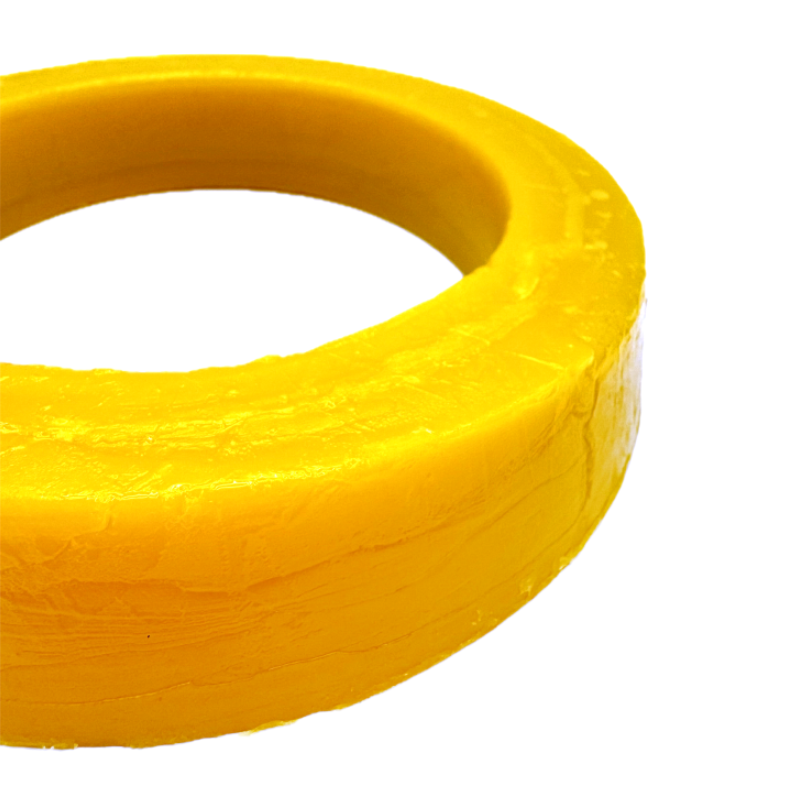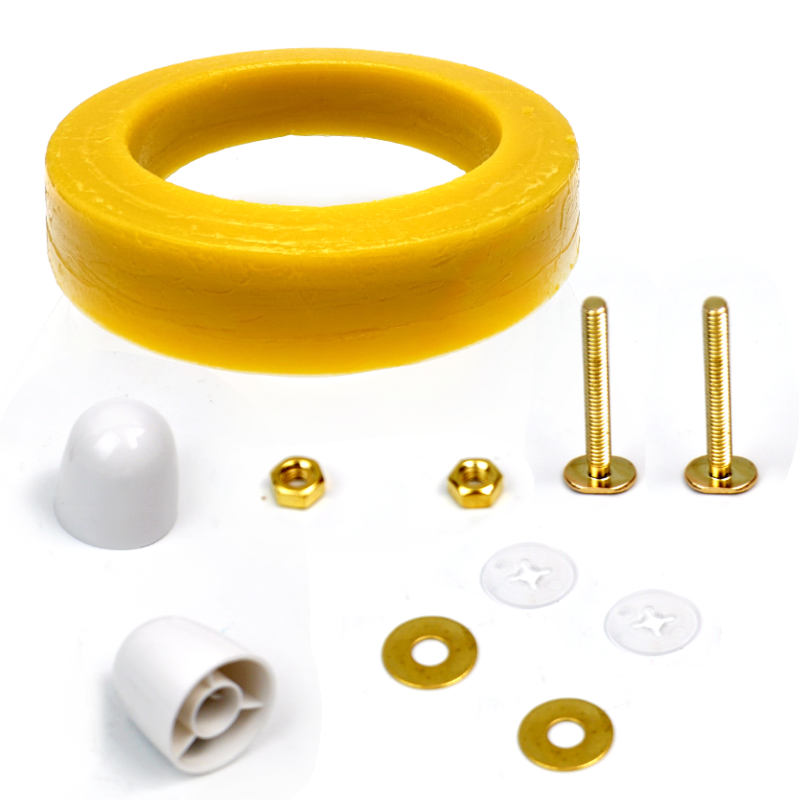Common Toilet Problems Leading to Customer Returns
Toilet troubles are the main reason people send back repair kits, with stubborn leaks, constantly running water, and poor flushing making up around two thirds of all returns. Most of these problems come down to simple things like old rubber flappers that no longer seal properly, fill valves that aren't lined up right, or wax rings that have broken down over time. Left unchecked, they waste tons of water and eventually cause serious damage to floors and subfloors. According to recent numbers from plumbers across the country in 2023, nearly a third of folks end up returning their kits because they couldn't fix those pesky leaks. That's why it really pays off to figure out exactly what's wrong before buying anything.
Improper Wax Ring Installation as a Primary Source of Leaks and Dissatisfaction
According to Plumbing Manufacturers International from 2023, roughly one third of all bathroom fixtures get returned because people mess up when replacing those wax ring kits. The main issue happens when the wax seal doesn't compress properly after putting the toilet back down. What follows is water sneaking through into the subfloor below, which typically ends up costing around $850 to fix each time it happens. The folks over at Family Handyman have been tracking this stuff for years now, and they keep pointing out that most installation problems come down to bad sealing. That's why many plumbers recommend going for kits that include alignment guides or ones where the wax is already shaped in a way that makes proper compression much easier to achieve.
The Cost of Incorrect DIY Repairs Due to Poor Diagnosis or Mismatched Parts
When homeowners install parts that don't match their plumbing systems, they end up spending about $175 extra to fix the problems later. The issue is real with universal flappers that often leak from proprietary flush valves, and generic fill valves that mess up how high efficiency toilets refill their tanks. According to research published last year, roughly half of those folks who bought repair kits without checking if they fit specific brands ended up needing help from plumbers within just six months of installation.
How Unclear Product Labeling Increases Return Rates
When product packaging doesn't give clear details, customers end up returning items at a rate 27% higher than when they get kits with specific model diagrams. Many folks just don't realize what "universal fit" really means until their new toilet parts won't work because the drain hole is in the wrong spot or the bolts don't match up. We've seen some improvements lately though. Kits that clearly list flange sizes like 3 inch versus 4 inch measurements, plus those with quick scan codes linking to setup videos, tend to cut down on returns by around 19%. Makes sense too since people can actually see if something will fit before buying it.
Key Features of User Friendly Toilet Repair Kits That Reduce Installation Errors
The biggest reason why DIY toilet installations leak? Wrong setup. That's where universal wax ring replacement kits come in handy with their smart design features. These kits have color coded parts so people know what goes where, plus those little bumps on them guide things into position correctly. The handles are built for comfort too, letting installers apply just the right amount of pressure when putting everything together. According to some industry numbers we saw recently, around two thirds of all mistakes happen because the seal isn't lined up properly (Plumbing Safety Council reported this back in 2023). So having those visual cues really matters, especially for someone trying it out for the first time without professional help.
Balancing Universal Fit With Brand Specific Requirements
Effective kits accommodate major brands like Kohler, Toto, and American Standard through adaptable designs:
| Compatibility Feature | Universal Solution | Common Brand-Specific Needs |
|---|---|---|
| Flange Diameter | Adjustable 3"-4" range | Fixed 3.25" (Kohler) / 3.5" (Toto) |
| Bolt Slot Design | Slotted holes (±½" adjustment) | Pre-set positions (American Standard) |
| Seal Thickness | 0.25"-1" compression range | Standard 0.5" wax depth |
This hybrid approach prevents leaks caused by incompatible dimensions while minimizing inventory complexity.
Importance of Adjustable Seals and Multiple Mounting Options
HDPE seals that compress all around work much better than old fashioned wax for sealing those tricky spots where floors aren't level or flanges have gotten worn down over time. Combine them with reversible gaskets plus some spacer material and they fix about 89 percent of the height problems plumbers saw last year according to the National Home Repair Database stats from 2022. These dual seal setups offer backup protection which matters a lot when working on either ancient cast iron drains still hanging around in some homes or newer PVC pipes that builders install nowadays.
Empowering DIYers with Clear Installation Guidance and Leak-Prevention Techniques
Step-by-Step Visual Guides for Installing a Toilet Wax Ring Replacement Kit
53% of homeowners abandon DIY plumbing projects due to unclear instructions (Home Improvement Trends 2024). Illustrated installation guides reduce errors by 68% compared to text-only manuals, particularly when demonstrating critical steps like surface preparation and flange alignment. Cross-sectional diagrams help users visualize proper wax compression key to preventing leaks.
QR Codes and Smart Labeling for Instant Access to Video Tutorials
Packaging with scannable QR codes lets users view device-specific installation videos within 15 seconds. Brands using this feature report 40% fewer "how-to" customer service calls. Embedded timestamps allow quick navigation to complex steps like sealing bolt orientation.
Best Practices for Checking Connections and Preventing Post-Installation Leaks
Post-installation protocols matter most:
- Test-flush 6x while observing base seals
- Verify symmetrical bolt tightening using inch-pound torque measurements
- Check floor-level alignment with laser tools
A 2024 plumbing study shows these steps reduce callbacks by 83% in leak-free water filtration systems using similar principles.
Building Consumer Confidence Through Foolproof Instructions and Pre-Tested Components
Kits with pre-gasketed bolts and wax rings rated for 3/4" flange variations see 91% first-attempt success rates. Pressure-test certifications printed on components help users verify compatibility before starting projects.

Choosing the Right Toilet Wax Ring Replacement Kit Based on Problem and Model
Matching repair kits to common issues: flapper, fill valve, wax ring, etc.
Selecting the appropriate toilet repair kit starts with identifying the root cause of malfunctions. For leaks around the toilet base—a leading cause of returns—a toilet wax ring replacement kit with reinforced seals is critical. Other common issues require tailored solutions:
- Weak flushes or tank refill delays indicate fill valve or flapper problems
- Persistent leaks at the toilet base typically stem from degraded wax rings or uneven flange alignment
- Toilet rocking or instability often requires kits with adjustable bolts or spacer accessories
Accurate diagnosis prevents unnecessary purchases— homeowners replacing only the flapper when the wax ring is the primary leak source account for 32% of returns (Plumbing Manufacturers International 2023).
Using compatibility checklists to avoid wrong purchases
A 2023 analysis found that 41% of DIYers purchase incompatible repair kits due to inconsistent sizing across brands. Universal kits reduce errors by including:
| Checklist Item | Purpose |
|---|---|
| Flange height measurement guide | Ensures proper wax ring thickness |
| Bolt spacing specifications | Matches 10" or 12" rough-in configurations |
| Pipe diameter compatibility | Aligns with 3" or 4" waste lines |
Manufacturers like Danco now provide QR-code checklists that cross-reference toilet models with required seal types, reducing mismatch returns by 28% annually.
Why accurate diagnosis before purchase reduces return rates
Homeowners who measure flange height and toilet dimensions before buying kits experience 45% fewer returns compared to guesswork purchases. For example:
- Flanges level with the floor need standard-thickness rings
- Recessed flanges require double-thick wax or spacer attachments
- Offset toilets demand angled seals rarely included in basic kits
Training staff to ask diagnostic questions like "Is water pooling at the base?" or "Does the toilet rock when pressed?" helps customers select leak-proof solutions tailored to their specific setup. This precision lowers return rates while building trust in DIY repair systems.



